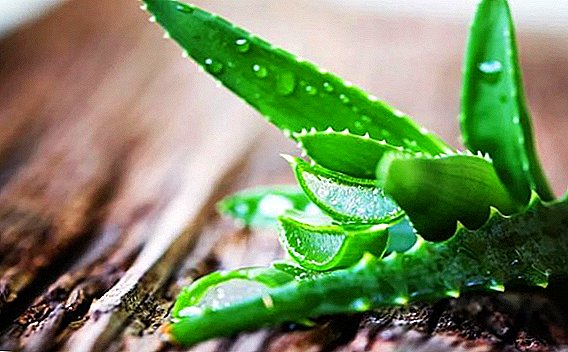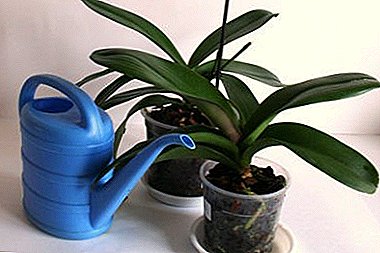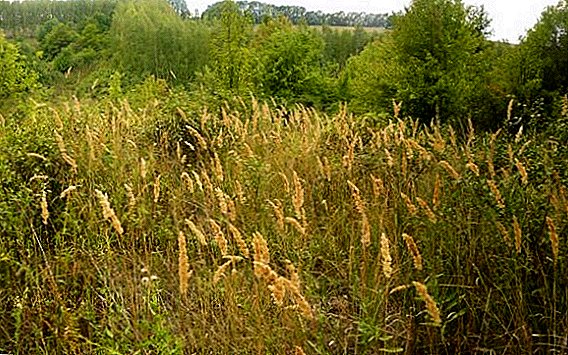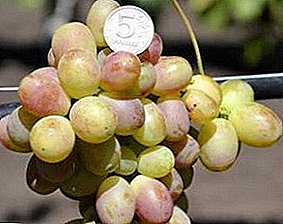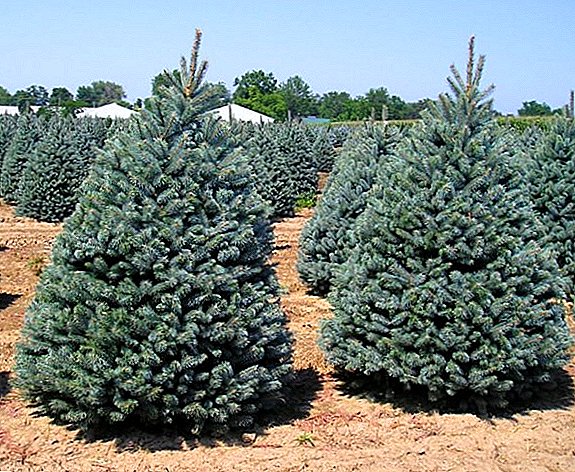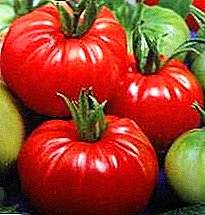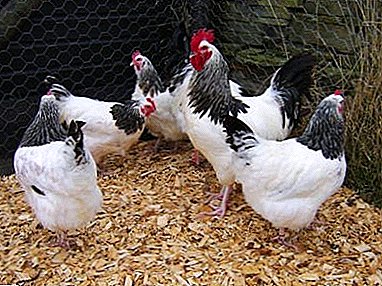
In the modern world, breeding poultry is possible, not only in industry and agriculture, but also in urban settings. Most often, chickens are bred in private homes, where the owners own the land so that you can build a chicken coop and enclose a place for walking.
Mini-meat chickens have gained wide popularity among agriculture because they are beneficial in their conditions of detention and unpretentious. We will discuss this in more detail in the article below.
How come?
This breed of hens was bred in Russia. Its selection involved the Zagorsk Poultry Institute, which is located in the Moscow region. Abroad, mini-meat chickens became common a little later breeding. And in some countries, these chickens have almost surpassed the standard meat or egg stock.
The appearance of this breed was a sensation in the poultry industry, because the previously raised hybrids did not give such productivity, both in egg production and meat qualities. They quickly won the love of farmers because they are comfortable in their content. and may even be suitable for beginners in this business.
Distinctive features
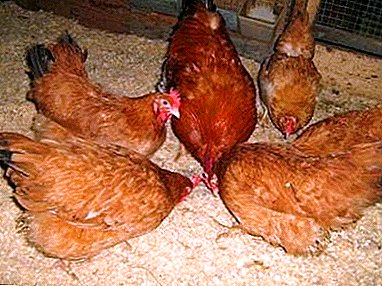 Firstly, A distinctive and main feature of such chickens is their rapid growth. While the bird eats little compared to other breeds of chickens, but gaining weight much faster than peers in age, but a different breed.
Firstly, A distinctive and main feature of such chickens is their rapid growth. While the bird eats little compared to other breeds of chickens, but gaining weight much faster than peers in age, but a different breed.On average, in 2 months, roosters can gain in weight up to 2 - 2.5 kg, and chickens 1-1.5 kg. And there are breeds of mini-meat chicken, which can reach at this age 3 kg or more.
- They are undemanding to the types of feed. They feel great if they consume conventional feed mixtures, both already specialized and manually mixed. This breed of chickens is also distinguished by high digestibility of food and fast metabolism, which is why they consume little food. And their breeding becomes profitable for the poultry farmer and inexpensive.
- These chickens differ in the fact that they are contained mainly in cages. On 1 square meter can be planted about 10-11 chickens. But it will feel great and free-range in the hen house.
To prevent a variety of diseases, it is worth keeping clean, both in the cages and in the whole chicken coop, since chickens are very sensitive to any diseases. This is due to the special physiology of these birds.
Some popular groups
In the responses to the first 3 groups of species in their own way VNITIP (the first letter "B" in the title) all the characteristics of the breed are similar in terms of productivity, output and other indicators, but differ in the color of the plumage.
B66
 This kind of mini-meat chicken, though it is as universal as other subspecies, but it can be attributed to more meat breed.
This kind of mini-meat chicken, though it is as universal as other subspecies, but it can be attributed to more meat breed.
They have strong bones and a well-developed breast; legs are short, but strong and correctly set, like in all mini-meat species. The colors of this subspecies may be exclusively white. Any other presence of shades on feathers in the tail, wings or on the back may indicate marriage.
The main declared standards:
- Egg production at this subspecies average of about 180 pieces per year, but experienced poultry farmers say that up to 260 pieces per year can be achieved with good care and feeding.
- The weight of an adult cockerel reaches up to 3.3 kg, and chickens up to 2.7 kg.
- Egg big, no more than 65 grams.
- Starts to be born at the age of half a year.
- In 2 - 3 months one individual can weigh from 1.3 kg to 1.6 kg.
- The maximum fertility of eggs is approximately 93%.
- Young animals survive in 85% of cases, but experienced poultry farmers say that with all the features and proper care, this percentage can be higher.
- Saving feed is quite substantial and amounts to 35% - 45% less compared to other species of birds.
- Have high tastes of meat.
B76
 These birds are as dwarfed as the others of this breed, but have white plumage with fawn shades. Derived by crossing the line of the father B77 and the line of the mother B66. Basically, all the characteristics remain the same as in B66.
These birds are as dwarfed as the others of this breed, but have white plumage with fawn shades. Derived by crossing the line of the father B77 and the line of the mother B66. Basically, all the characteristics remain the same as in B66.
B77 and egg production
 The bird of this breed has a dense light brown plumage with a golden hue, as in the description of the pale breed of chickens. Bred by selection and selection. All other characteristics of B77, including egg production, are similar to B66. Another B77 is called the fawn subspecies of this breed of chickens.
The bird of this breed has a dense light brown plumage with a golden hue, as in the description of the pale breed of chickens. Bred by selection and selection. All other characteristics of B77, including egg production, are similar to B66. Another B77 is called the fawn subspecies of this breed of chickens.
A photo
Check out the photos of the breed of mini-meat chickens:



Care requirements
In order for the bird to feel comfortable and healthy it is necessary to maintain it properly, to prevent the occurrence of any diseases in time and to fully feed it.
- Mini-meat chickens are very fond of warm and dry bedding, so in the cold season you need to carefully warm the chicken coop, and in summer, make sure that the chickens do not walk in rainy weather, as their paw is 30% - 40% lower than other chickens, because they are a dwarf subspecies. Because of this, the bird can rub the abdominal part of the wet ground and catch cold.
- It is desirable that in a cage or house there was a bath filled with sand, so that the bird could be cleaned, since the bottom of the bird is contaminated more often and more in comparison with ordinary chickens.
- Chicken nests should be located below the normal level at about 60–70 cm from the floor. General cleaning and disinfection of the chicken coop and walking should be carried out more often than usual, it is advisable to do this once a year, as mini meat chickens like cleanliness.
ATTENTION! Mini-meat chickens fly badly and are very tied to the house, so don’t be afraid to let them go for free range, because the likelihood that they will fly away or get lost is very small!
Feeding
One bird is enough 130 grams of feed per day. You can feed both specialized feed and ordinary grain with an admixture of mineral and vitamin supplements. In the summer, you can give chickens free range if possible. They will eat the roots of herbs, foliage of shrubs, root vegetables. And also the bird loves insects, with pleasure feeds on ant eggs, worms, bloodworms, flies.
In winter, chickens need to be provided with hay. If the feed is mixed by hand, then you should take care of the presence in it of fish or bone meal, chalk, eggshell. Young animals should drink vitamin supplements. This ensures proper bone formation and good growth.
If the poultry food is unbalanced, then the hens can start pecking at their own eggs. If this happens, then in the future the bird will continue to “mess” even if you correct the food. Therefore, it is better to put such a bird in a separate cage, or fatten it before slaughter and stab it.
Breeding
Mini meat chickens are beautiful chicks, so they hatch eggs well and take care of chickens. If you buy a cockerel breed Cornish, you can get snow-white broilers. But experienced poultry farmers do not recommend spoiling the gene pool of mini meat chickens, as they may lose their stated standards and subsequently purebred chickens.
Despite the fact that chickens are excellent chicks, there may be such individuals who absolutely do not want to incubate. Therefore, if you want to provide uninterrupted output for yourself or for sale, then it is better to purchase incubators.
A good incubator will turn the eggs on its own and maintain optimum temperature and humidity. The hatched chicks are left in the incubator until they are completely dry., then transplanted into a box with an additional illumination of the infrared lamp.
In general, the breeding of mini-meat breed will not make much effort, since the survival rate of young animals and the fertility of eggs is at a high level.
Conclusion
The mini-meat breed of birds is universal in its characteristics and in many respects can surpass ordinary laying hens or broilers. According to reviews, she deserved universal love from private farmers and not only. With proper maintenance, these dwarf birds will delight you with a long egg carrying and tasty meat.


 Firstly, A distinctive and main feature of such chickens is their rapid growth. While the bird eats little compared to other breeds of chickens, but gaining weight much faster than peers in age, but a different breed.
Firstly, A distinctive and main feature of such chickens is their rapid growth. While the bird eats little compared to other breeds of chickens, but gaining weight much faster than peers in age, but a different breed.